PROJECT STEPS
- Performing a technical audit of the site and providing recommendations for removing technical issues.
- Collecting and clustering keywords for FinTech, EdTech, Retail, and Real Estate.
- Competitor analysis (priority industries, indicators, competitive advantage).
- Offering the client to expand the website structure through adding branches (sub-industry pages) from the parent industry pages (FinTech, EdTech pages, Retail, and Real Estate) based on collected semantics and competitor analysis.
- Giving recommendations on improving FinTech and EdTech pages. Before the project, the client’s website already had two pages — Edtech and Fintech, which didn’t bring traffic and needed optimization.
- Providing content briefs for the new Retail and Real Estate pages, sub-industry pages for FinTech and EdTech, which included recommendations on keywords, structure, word count, and links.
- Cooperating with the client to create a content strategy focused on FinTech, EdTech, Retail and Real Estate to fill the blog with articles highlighting the company’s expertise in these areas and covering informational keywords to increase traffic.
- Creating content briefs for new articles, which included recommendations on keywords, text structure, word count, and links, and pillar pages for FinTech and EdTech to cover high-frequency queries.
- Creating content briefs for optimizing the existing blog articles on FinTech and EdTech topics. After analyzing them, we selected the ones that had the most potential to increase organic traffic and improve website’s performance.
- Providing recommendations for linking articles to the priority industry pages, creating blocks taking into account linking from other commercial pages to the priority industry pages, and adding priority pages to the header and the footer.
- Developing a link-building strategy for growing links to industry and sub-industry pages, as well as to related articles, based on competitor analysis within these niches.
THE POWER OF INTEGRATED MARKETING
Integrated marketing has two critical components: demand generation and demand capture, which we have included into the SEO strategy for the Geniusee site.
- Demand Generation for Geniusee: Our SEO strategy was aimed at not only optimizing the existing content, but also at creating the new one that would facilitate the formation of demand. For example, our strategy involved adding articles that highlighted the latest trends and research in the FinTech and EdTech industries, thus communicating Geniusee’s capabilities to potential customers.
- Demand Capture in action: The next step after generating demand is capturing it, which our SEO strategy for Geniusee was mainly focused on. Demand Capture includes, in particular, the optimization of commercial pages with the enhancement of conversion elements. This helped to establish an effective connection between informational content on the blog and commercial pages, turning user interest into real actions on the site.
This way, we helped Geniusee not only to attract new users to the site, but also convert their interest into specific actions, which positively affected the overall performance of the site.
RESULTS
Traffic growth (Google Search Console):
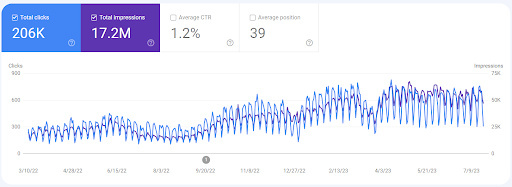
Increased DR, which is an indicator of quality backlinks due to an effective link-building strategy:
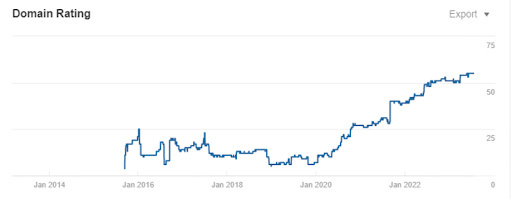
Top positions for priority parent industry pages and their branches
Based on the collected semantics, we created sub-industry pages derived from the parent EdTech and FinTech pages.
Positions for keywords for the EdTech page before and after optimization and growing backlinks:
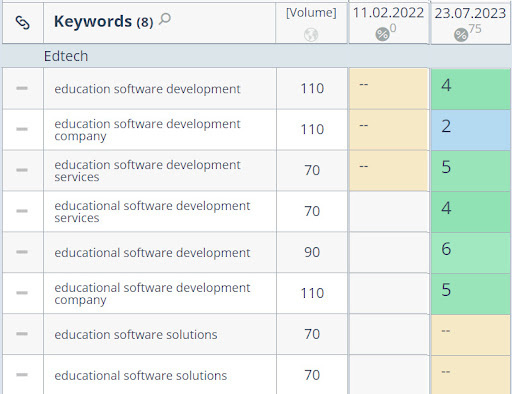
Positions for keywords for the newly launched EdTech sub-industry pages, the LMS page in particular:

Positions for keywords for the e-Learning page:

E-Learning app development page:

Positions for keywords for the newly launched FinTech sub-industry pages, the e-Wallet page in particular:
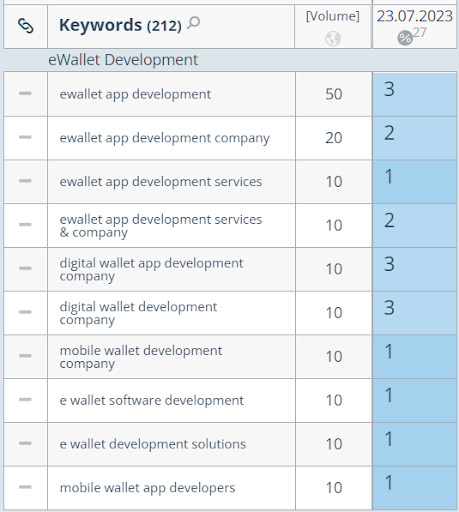
Positions for the main keywords for the Lending and Trading pages:
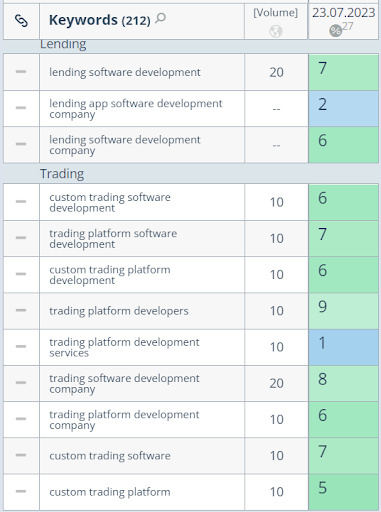
Banking Software Development and Accounting pages:
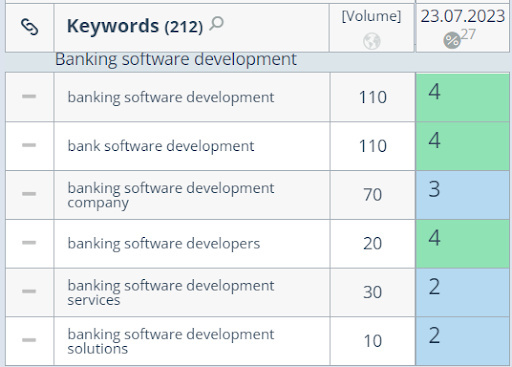
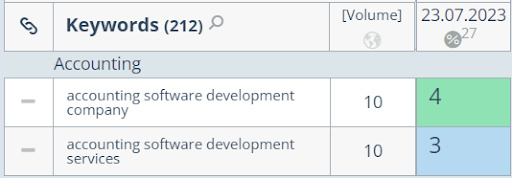
Positions for keywords for the newly launched Retail and Real Estate pages:
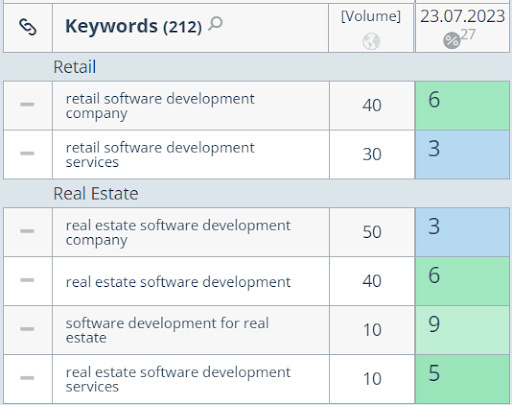
Sub-industry pages for Retail and Real Estate are currently being created.
CONCLUSION
Targeting industry-specific commercial requests and expanding the structure by creating branches from the main commercial pages allow businesses to increase the number of entry channels for potential customers to the site, growing organic traffic. Writing blog articles also helps to attract organic traffic and can be a lead generation channel. It’s important to develop a link-building strategy and increase links systematically.
By simultaneously optimizing pages and acquiring quality links, as well as due to close cooperation with the client, we managed to achieve impressive results.